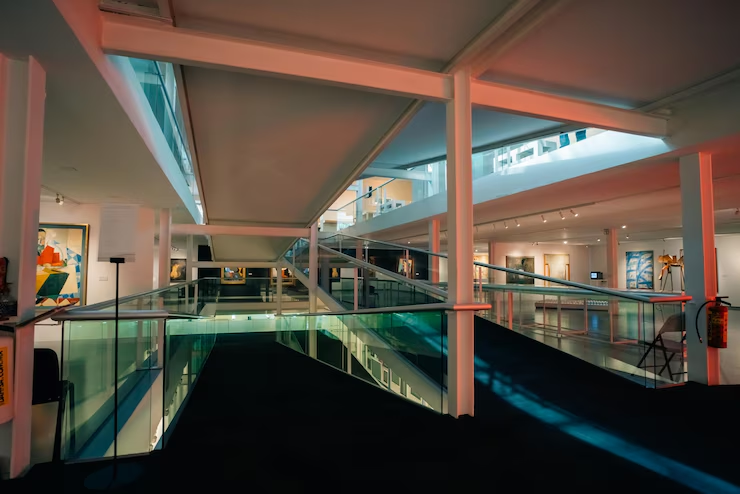1. Introduction: Redefining the Convention Experience
- Convention centres have traditionally prioritized capacity and logistics—but today’s demand is for experience-first, flexible, and visually striking environments.
- The future lies in designs that blend operational efficiency with emotional resonance.
2. Multi-Functionality is Non-Negotiable
🔄 Flexible Configurations
- Modular partitions, retractable seating, and mobile tech infrastructure allow for quick transformations between conferences, concerts, exhibitions, and galas.
🪑 Interior Implications:
- Movable walls, fold-away furniture, acoustically adaptive materials.
- Neutral but high-quality finishes that can shift tone depending on the event.
3. Aesthetic Upgrades: Not Just Boxes Anymore
- Convention halls are embracing natural light, bold architectural features, curated art, and local cultural motifs.
- Biophilic design (indoor plants, wood textures, water features) improves both looks and attendee well-being.
Key Trend: From generic to Instagrammable—making the space part of the event’s storytelling.
4. Technology Integration, Seamlessly
💡 Smart Infrastructure
- AI-powered lighting & HVAC systems adjust automatically based on occupancy and time.
- LED walls, projection mapping, and AR/VR zones are becoming standard.
🧠 Design Considerations:
- Hide tech within walls, ceilings, or furniture without compromising accessibility.
- Ensure power/data points are built into floors and fixtures.
5. Hybrid-Ready Spaces
- Post-pandemic, convention centers must support in-person + digital audiences simultaneously.
- Interiors must accommodate cameras, soundproofing, live-stream setups, and content creation areas.
New Zones: Green rooms for virtual speakers, podcast booths, video walls with interactive capabilities.
6. Sustainability in Design
- Eco-friendly flooring, solar-powered lighting, rainwater harvesting, and LEED certification are not just nice-to-haves—they’re expected.
- Furniture made from recycled materials, low-VOC paints, and energy-saving materials.
Bonus: Sustainability becomes a design narrative, not just a backend feature.
7. Wayfinding, Accessibility & Comfort
- Large spaces demand smart navigation: digital kiosks, color-coded zones, intuitive lighting cues.
- Enhanced comfort zones: lounges, rest pods, nursing rooms, prayer spaces, and quiet zones are essential for inclusivity.
8. Cultural Relevance & Localization
- Designing with local architecture, crafts, or history in mind creates authenticity and enhances user connection.
- Branded interiors for high-profile conventions—spaces that can adapt to different identities while maintaining design cohesion.
9. The Rise of Experiential Zones
- Convention centres are incorporating art installations, sensory rooms, interactive exhibits, and even meditation pods.
- These spaces act as breakout areas that reduce cognitive overload and encourage networking.
Conclusion: The Convention Centre as an Experience Ecosystem
Tomorrow’s convention centre interior design are not just event venues—they’re hybrid, adaptive, tech-enabled hubs of connection, culture, and creativity. By merging functionality with high-design, they become destinations in their own right. Read the details on Design arc interiors.

